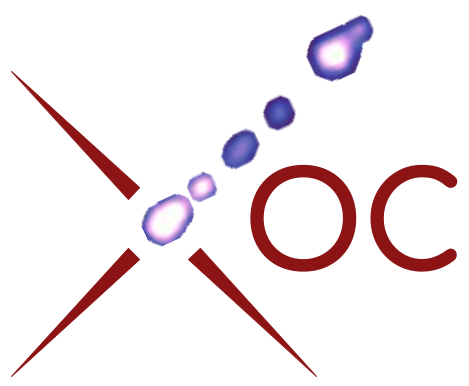Galaxy Clusters and Cosmology

Our work uses the observed distribution and internal properties of clusters, as functions of mass and redshift, to probe the natures of dark matter, the weakly interacting yet dominant matter component of the Universe, and dark energy, which drives cosmic acceleration. Measurements of galaxy clusters are powerful tools for such work, alongside measurements of the cosmic microwave background, supernovae and galaxy surveys.
X-ray observations allow us to determine the distribution of matter within galaxy clusters, both the baryonic mass (predominately hot gas) and non-baryonic dark matter. Another way to measure cluster masses utilizes gravitational lensing, the bending of light rays caused by massive objects, as predicted by General Relativity. Our group has been at the forefront of using gravitational lensing measurements of clusters to help constrain the properties of dark matter and obtain improved constraints on cosmological models.
Site content
For further discussion of this work, see e.g.:
- Mantz, A., Morris, G., Allen, S., Canning, R., Baumont, L., Benson, B., Bleem, L., Ehlert, S., Floyd, B., Herbonnet, R., Kelly, P., Liang, S., Von Der Linden, A., McDonald, M., Rapetti, D., Schmidt, R., Werner, N., & Wright, A. (2022). Cosmological constraints from gas mass fractions of massive, relaxed galaxy clusters. Monthly Notices of the Royal Astronomical Society, 510(1), 131-145. https://doi.org/10.1093/mnras/stab3390
- Wan, J., Mantz, A., Sayers, J., Allen, S., Morris, G., & Golwala, S. (2021). Measuring H0 using X-ray and SZ effect observations of dynamically relaxed galaxy clusters. Monthly Notices of the Royal Astronomical Society, 504(1), 1062-1076. https://doi.org/10.1093/mnras/stab948
- Mantz, A., Von Der Linden, A., Allen, S., Applegate, D., Kelly, P., Morris, G., Rapetti, D., Schmidt, R., Adhikari, S., Allen, M., Burchat, P., Burke, D., Cataneo, M., Donovan, D., Ebeling, H., Shandera, S., & Wright, A. (2015). Weighing the giants - IV. Cosmology and neutrino mass. Monthly Notices of the Royal Astronomical Society, 446(3), 2205-2225. https://doi.org/10.1093/mnras/stu2096
- Allen, S., Evrard, A., & Mantz, A. (2011). Cosmological Parameters from Observations of Galaxy Clusters. Annual Review of Astronomy and Astrophysics, 49(1), 409-470. https://doi.org/10.1146/annurev-astro-081710-102514
